TRASH
TRASH
AFRICAN CINEMA FROM BELOW
KENNETH W. HARROW

This book is a publication of
Indiana University Press
601 North Morton Street
Bloomington, Indiana 47404-3797 USA
iupress.indiana.edu
Telephone orders 800-842-6796
Fax orders 812-855-7931
2013 by Kenneth W. Harrow
All rights reserved
No part of this book may be reproduced or utilized in any form or by any means, electronic or mechanical, including photocopying and recording, or by any information storage and retrieval system, without permission in writing from the publisher. The Association of American University Presses Resolution on Permissions constitutes the only exception to this prohibition.
 The paper used in this publication meets the minimum requirements of the American National Standard for Information SciencesPermanence of Paper for Printed Library Materials, ANSI Z39.48-1992.
The paper used in this publication meets the minimum requirements of the American National Standard for Information SciencesPermanence of Paper for Printed Library Materials, ANSI Z39.48-1992.
Manufactured in the United States of America
Library of Congress Cataloging-in-Publication Data
Harrow, Kenneth W.
Trash : African cinema from below / Kenneth W. Harrow.
p. cm.
Includes bibliographical references and index.
ISBN 978-0-253-00744-5 (cl : alk. paper) ISBN 978-0-253-00751-3 (pb : alk. paper) ISBN 978-0-253-00757-5 (eb) 1. Refuse and refuse disposal in motion pictures. 2. Motion picturesAfrica. I. Title.
PN1993.5.A35H375 2013
791.43096dc23
2012037383
1 2 3 4 5 18 17 16 15 14 13
For Alexander, Sharon, Aram, and Joseph
Contents
Preface and Acknowledgments
In a strange way Trash: African Cinema from Below came about due to an off-chance remark of Jude Akudinobi, who was troubled by my words in Postcolonial African Cinema (2007) that it was time for some real trash in African cinema. What I meant was that the system needed to be shaken up: that we had to be shaken out of our historical need to read African cinema in narrow political terms, as subject to the exigencies of nation building, of meliorism, of Truth, with serums delivered by Authentic African voices performed by Griots.
I felt we needed to expand our critical readings beyond the educational imperative, and African cinema needed to become something other than dogmatic. It was indeed becoming such, as Bekolo had already launched us on the path with Quartier Mozart, and the late Djibril Diop Mambety had never succumbed to reductionist formulae; Henri Duparc had always worked toward a popular cinema. By the 1990s, Nollywood was making itself known. Things had moved, had changed. It was indeed time for a revolution in African critical approaches.
Now there are many significant studies, like Haynes and Okomes Nigerian Video Film and Larkins Signal and Noise, that recognize the presence of Nollywood and its trashy films. There are new understandings of the cinema scene as entailing more auteurist film as well as popular film, as Diawara has shown in his latest study African Film: New Forms of Aesthetics and Politics, which radically revises the schematic, influential program he set out thirty years ago when he defined African cinema by its thematic approaches, its serious agendasthat now cries out for more. Diawara has worked in some ways more than anyone to get us there by the creation of his public voice in documentary films, beginning with the important Rouch in Reverse, in his compelling memoirs in the form of films, the book-length essays, journal articles and blog entries, and finally his own major study on African cinema that are intended to lead us to current groundbreaking films that are auteurist as well as popular.
This book began by wondering about trashy aesthetics, graffiti, popular cinemas, and imperfect cinemas that enriched our reactions to African visual culture, with its Mammy Wattas and its mammy wagons, its posters of Amadou Bamba and Mourid icons, an entire creative world of public African iconography, so free, so uninhibited, so much beyond the limited understandings in the west of public versus private spaces, so much more fully political than our older ideological thinking permitted, following what our earlier gods, Fanon, Cabral, Nkrumah, Cheikh Anta Diop, had set out for us during the period of national liberation and revolutionary struggle. Alan and Mary Noor Roberts must be acknowledged as crucial in their work on public art, Mouridism, and popular images.
Focusing on trash does not constitute a rejection but an advance on positions we all shared in the 1970s and 1980s. The change is signaled in Gerimas latest brilliant film Teza, which revisits where we had been, and how more rethinking on our absolutist, grand narratives of liberation is required. The Bataille who inspires the early chapters of this book wanted to turn his bourgeois world upside-down. That was in the 1920s! We now have Bekolos Saignantes to point us to a new, crazy, noir, exciting world. We have the graffiti images of Nacros Nuit de la vrit. We need this visual trash to come alive. We have Hell in all its glory lighting up the screens of Nollywood, despite the imams of Kano. The screens were moribund with deadening Hollywood blockbusters until the movie theaters closed down. Nollywood has created a miraculous resurrection of the popular visual image of the self, in all its imaginary formulations, just as Africans fed the visual images of Others since the inception of cinema. Indeed both popular and auteur cinema today trade on images of melodrama, garbage, loss, and emotion, in ways that were inconceivable when a stately group of African students sat around the table in Afrique sur Seine, Paulin Vieyras 1955 film that kicked things off with sketches of African lives in exile.
But what is trash? I discovered that it is not a simple term. What follows is an attempt to understand it, and in ways that make sense of African cinema, then and now. And it is an attempt to bring various approaches to such concrete things as waste management and toxic dumping into relation with globalization, current cultural trends in popular commercial filmmaking, and the tropes and styles that borrow from the rubbish bins, trash heaps, garbage cans of the world. And trash, above all, applies to people who have been dismissed from the community, marginalized and forgotten, turned into bare lives in states of exception for others to study and pity. Trash encompasses the turning of that reduced status into the basis for revolt, change, and the turning away from regimes that produce definitions of trash to newly formulated regimes that force us to reconsider the criteria for assigning value, not only to people, to culture, but to African films in particular.
Thanks, Jude, for making me think this through. Thanks also to Carmela Garritano, who inspired and encouraged me to take Nollywood and Gollywood seriously, and who has persevered in making this a field of study that has passed from being casually dismissed to perhaps the most compelling area of African popular culture and African cinema. It is daunting for those of us accustomed to auteur cinema to take on something as radically different as popular Nollywood cinema, and Carmelas support helped me dare to attempt to bridge the distance between the two.
Jonathan Haynes, the doyen in Nollywood film studies, has done more than anyone to open up this field to film scholars trained in conventional film studies. His work has inspired me for a long time.
Thanks to my students of ENG 478, Fall 2010, especially Carol Ross and Sean Walsh, who were superb thinkers about trash and the study of its manifest features as a trope, as an aesthetic, as key to the material dimensions of society and culture. Thanks to Scott Michaelsen for his challenging reading of the chapters on Bataille and Agamben and his brilliant work on hybridity and its misconceptions. Thanks to Salah Hassan for his support from my first talk on high and low in Bataille, and the years of trashy examples I couldnt resist citingand for his faith in my scholarship. Especially thanks to Salah for making a political commitment in scholarship seem like our imperative and raison dtre as scholars.
Next page


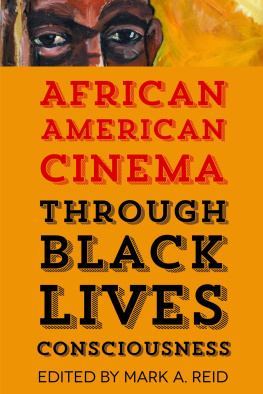
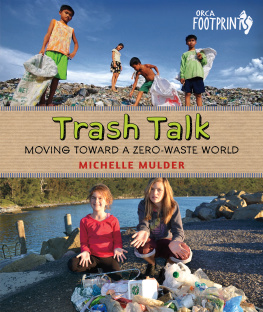
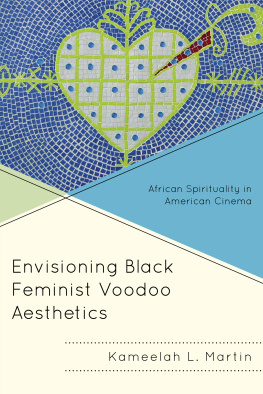


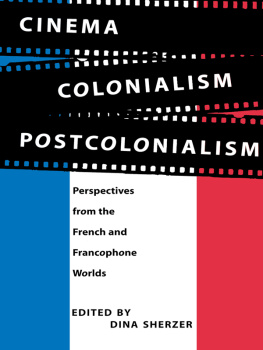
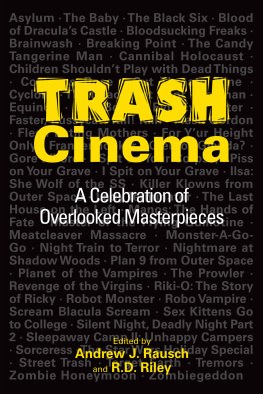
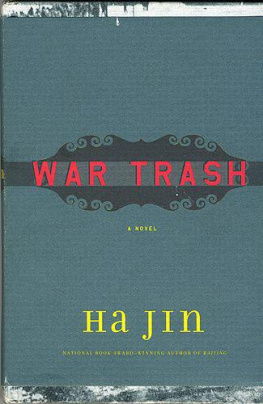

 The paper used in this publication meets the minimum requirements of the American National Standard for Information SciencesPermanence of Paper for Printed Library Materials, ANSI Z39.48-1992.
The paper used in this publication meets the minimum requirements of the American National Standard for Information SciencesPermanence of Paper for Printed Library Materials, ANSI Z39.48-1992.